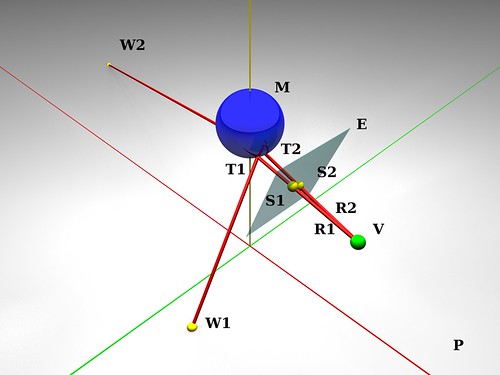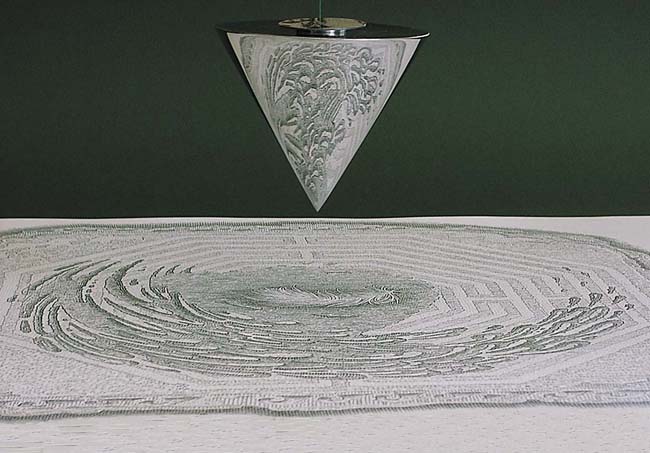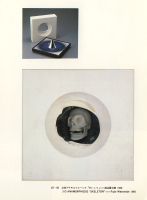Strange mirrors
A survey
- Andrew Crompton used an upside-down conical mirror for his artwork at Manchester Museum of Science and Industry.
- István Orosz also used this kind of mirror, but placed it higher above the distorted image in Atlantis Anamorphosis II.
- Stella Battaglia and Gianni Miglietta use spherical and dihedral mirrors. The distorted images are three dimensionnal structures, instead of planar drawings.
- In 1984, Fujio Watanabe created two artworks where a central conical mirror was surrounded by a plastic carved cylinder. The image of this cylinder, when viewed through the mirror, revealed a human face and a skull.
Few or nothing has be done till now for arbitrary shaped mirrors. We propose a method that can handle any kind of reasonnable shaped mirror, any observer's position, and any support for the locus where the distorted image lays.
A general method
This figure illustrates the principle behind our method. An observer is at point V. He looks at the mirror M. Suppose the image he wants to see in the mirror is on (virtual) screen E, while the distorted image will lay on plane P.
 A ray R1 comes from the observer's eye, go through the screen at point S1, hits the mirror in T1, is reflected and hits the plane P at point W1 . Thus, the color of W1 has to be set to the color of S1. If we were able to compute the coordinates of all Wi associated with each pixel of the original image laying on E, we would have solved the anamorphosis.
A ray R1 comes from the observer's eye, go through the screen at point S1, hits the mirror in T1, is reflected and hits the plane P at point W1 . Thus, the color of W1 has to be set to the color of S1. If we were able to compute the coordinates of all Wi associated with each pixel of the original image laying on E, we would have solved the anamorphosis.
Fortunately, we can use the functionalities of ray tracers to achieve this task:
- Defining arbitrary mirror shapes.
- Computing intersection of vectors and objects (on the mirror and on the plane).
- Outputing coordinates to a text file.
Links
More details can be found in this paper, presented Bridges 2010.
This page shows some achievements (virtual and real) based on this method.
This tutorial (to be amended soon) can help you concretely applying the method.



